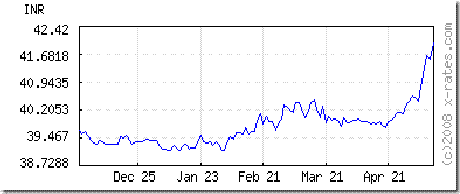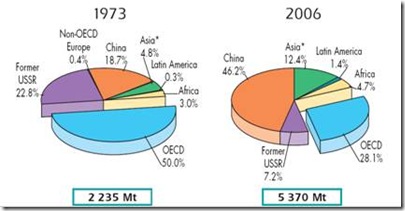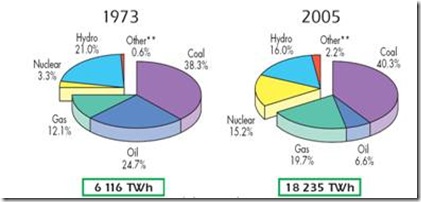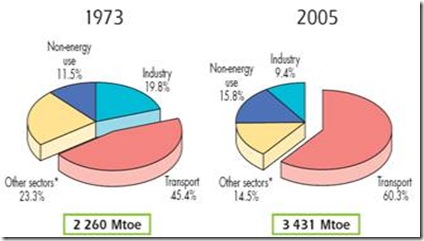One of my colleagues gave the following 10 reasons of why oil price would go down soon..
1. Everybody thinks it will go higher
2. Speculation has caused the price to climb and will make it crash once it starts to go down.
3. Higher gas prices will start to make an impact on petrol consumption
4. The dollar will plateau or slightly recover
5. Avg mpg of cars worldwide continues to go up
6. We had a wet winter with a lot of snow in the west which will mean more hydro power is available; especially compared to the last few dry years.
7. US oil reserves are full
8. China will consume less oil during the month of august to control air pollution
9. Airline consolidation is causing fewer flights (and they are also flying slower to save 1-2% of kerosene)
10. People will see the end of the war in Iraq coming and the corresponding in reduction in consumption of military oil
Here are 7 reasons why it might not go down according to me:
US defense while being one of the biggest consumers of oil in the world, still accounts for less than 400,000bbl/day while US total consumption is well over 50 times that. So, even if you think the Iraq war will be over (I don’t think that Iraq war is anywhere near to the end) and even if the entire US military establishment is closed from tomorrow, US consumption would go down barely by 2% and it would hardly be blip in the world consumption of about 82million bbl/day.
Airline consolidation is a long drawn out thing and the government will not be folding its hands to see all the airlines cutting all the smaller cities. Even if all airlines consolidate and the entire government establishment is happy with, the increase in driving necessary to substitute the air travel could more than substitute the reduction in consumption.
China might more likely increase the consumption rather than decrease consumption of oil to curtail pollution. This is because they use the problem is in their dirty coal, and to reduce pollution they might be hard pressed to substitute some of the coal sources with less polluting oil sources.
US strategic reserve is a bit big (worth of slightly more than a month’s supply of oil – at 700 million bbl) but US has never drawn from it in 3 decades, except for some 17 m bbl in 1991 Gulf war and a similar amount during Katrina. Unless there is a major disaster next year there is very little chance that US will draw from strategic reserve. That said, if it is full, in a way it would help to slightly reduce the oil prices because the US government would stop further purchases of oil to fill it. This effect is only be marginal.
Higher oil prices will impact on consumption or cars becoming fuel efficient is only in the long term. It would be unrealistic for a Humvee or a Ford Pickup driver to immediately switch to Smart or Civic or Prius or any such ilk. In fact, the price at the pump is well past $3 since 2006, and the consumption has barely slowed down at 0.3 % ending this April. This slowdown was more than made up by increase in consumption in Saudi Arabia and elsewhere.
Dollar recovery will only be marginal. The credit crunch is far from over. The problems that have surfaced since last August have not gone away and if anything house prices are only heading south every month.
So, in the end there are some minor cases for oil consumption to go down, but $50 or $80 is a bit of a stretch.



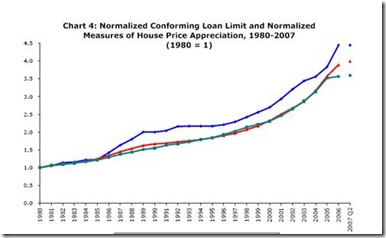
![clip_image001[5]](http://lh4.ggpht.com/vvbalajiviswanathan/SCykLMIvm7I/AAAAAAAAAQU/RGaMtgM5Wvc/clip_image001%5B5%5D_thumb%5B1%5D.jpg?imgmax=800)

